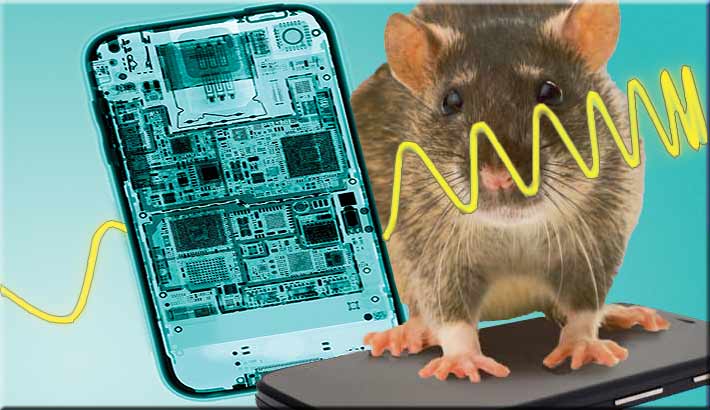
If you want your long-tailed vermin to enjoy the Vulcan blessing of live long and prosper, have your vet surgically attach a miniature cell phone to its ear, according to a study funded by the U.S. government.
After the preliminary findings of a $25 million National Toxicology Program (NTP) cell phone radiofrequency radiation study on rats were released last Thursday, conversationalists at Memorial Day picnics, whose endless knowledge base is fragilely built on headlines, most likely had their fellow guests wondering if they should hold their phone at arm’s length while texting their children at the other end of the pool.
After all, the news was troubling. Mother Jones said ‘Game-Changing’ Study Links Cellphone Radiation to Cancer; TIME championed: Cell Phone-Cancer Link Seen in Rat Study; and ConsumerReports’ headline was: Government study finds link between cell phones and cancer in rats.
For those who took the time to be enticed by an article’s first paragraph, it was even more troubling as Scientific American wrote that the release of the study presented some of the strongest implications in more than two decades of research that “higher doses of such signals could be linked to tumors in laboratory animals – unsettling news for billions of mobile phone users worldwide.”
However, many post publication peer reviews of the study’s findings disagreed and many articles were updated showing the broad stroke of condemnation to the study’s results at the bottom of the article. But it’s seldom that viewers will ever read an article twice, letting the study become gospel.
Especially confounding in the results for those who read the study was the statement that the rats exposed to radiation on average lived longer than those that weren’t.
NTP had asked for preliminary peer reviews of the study. But the adage, be careful what you wish for, came with a sharp rebuke.
Michael S. Lauer of the Office of Extramural Research at the National Institute of Health even did some simulations and power analyses and concluded that there was a high risk of false positive findings, especially since the epidemiological literature questions the purported association between cell phone exposure and cancer.
He concluded in the beginning of the report that he was “unable to accept the authors’ conclusions.”
After collecting two years’ worth of data, the NTP said they found “low incidence” of brain and heart cancers (malignant gliomas in the brain and schwannomas in the heart) in male rats compared to controls. Female rats showed no increased incidence of cancers at all.
The full data is expected to be released in 2017.
Researchers had exposed more than 2,000 rats and mice to wireless frequencies using Code Division Multiple Access (CDMA) and Global System for Mobile Communications (GSM). In batches of 90, rats received full-body exposure to 900MHz frequencies of both types of signal modulations. Mice received the same treatment, but at 1900MHz frequencies. Exposure came in 10 minute stretches over 18 hours, with a total of nine hours a day, seven days a week.
ConsumerReports said it believes the results of the study could dramatically shift the national debate over cell phone safety.
“The results of the NTP study have the potential to move a debate that has been locked in stalemate for almost as long as cell phones have been around,” ConsumerReports said in an article.
“The NTP’s website says that the results may be used by the Food and Drug Administration and the FTC in determining how best to protect consumers from the potential harms of radiation that comes from cell phones,” ConsumerReports said.
“Likewise, the cell phone industry may have to alter its stance. The wireless association trade group CTIA has maintained that cell phones are completely safe, and has fought to block San Francisco from passing laws that would require electronics retailers to notify consumers about the proper handling of cell phones,” it said.

The last study done on cell tower radiation was quickly debunked as ‘junk science’.
CTIA responded on Friday, issuing a statement that multiple international and U.S. organizations — including the U.S. Food and Drug Administration, World Health Organization, and American Cancer Society — have determined that the already existing body of peer-reviewed and published studies shows that there are no established health effects from radio frequency signals used in cellphones.
That evidence includes federal brain-cancer statistics showing that since the introduction of cellphones in the U.S. in 1983. The rate of brain cancer in the United States has remained stable, CTIA said.
The last time that a cancer-related study was published, this one involving cell towers, it was quickly debunked for its sampling methods and other inconsistencies in its research.















